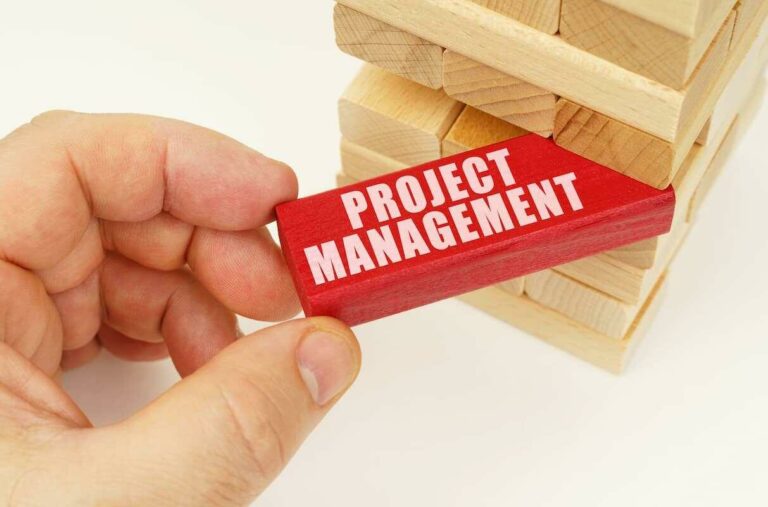Definition Of Impression Workplace Of The Chief Risk Officer
Gambling is a risk-increasing funding, wherein cash available is risked for a attainable massive return, but with the potential of dropping it all. Purchasing a lottery ticket is a really dangerous funding with a excessive likelihood of no return and a small probability of a very high return. In contrast, placing cash in a bank at a defined rate of interest is a risk-averse motion that offers a guaranteed return of a small acquire and precludes different investments with probably greater acquire. The chance of getting no return on an funding is also known as the speed of wreck. In determination theory, remorse (and anticipation of regret) can play a significant half in decision-making, distinct from danger aversion[76][77] (preferring the standing quo in case one turns into worse off).

By collecting knowledge across these classes, enterprises and traders can achieve a nuanced understanding of potential risks and actively work in direction of reducing their probability and severity. This course of allows enterprises and traders to maximise their impact on individuals and planet. In the context of public well being, risk assessment is the method of characterizing the nature and likelihood of a dangerous impact to people or populations from sure human actions.
How To Use A Risk Register?
It includes market risk, credit threat, liquidity risk and operational risk. Business dangers come up from uncertainty concerning the revenue of a commercial enterprise due to undesirable occasions similar to changes in tastes, changing preferences of shoppers, strikes, increased competition, modifications in government policy, obsolescence etc. But the method changes if the risk risk impact definition is an worker in the Accounts Payable division clicking a phishing link. There’s a minimum of a medium probability of a kind of staff making this mistake. And the impression could be very excessive if a hacker received entry to a user account that controls monetary transactions. Identifying – as properly as assessing and mitigating – dangers just isn’t a one-time exercise but an ongoing studying process that requires re-evaluating dangers as the project (or policy) develops.
Risk analysis offers a structured method to assess uncertainties, enhancing an organization’s adaptability and long-term success. Inherently, inner auditors can’t consider each attainable threat facing a company. The multiple sources of potential engagements coupled with the associated scope of labor require the environment friendly use of restricted inner audit resources. This website is using a security service to protect itself from online attacks. There are a number of actions that could trigger this block together with submitting a certain word or phrase, a SQL command or malformed information. Once risks have been identified, assessed and prioritized, they must be mitigated.
These assessments might help decide the severity of an occasion and help to calculate danger. Anthony Giddens and Ulrich Beck argued that while humans have all the time been subjected to a level of threat – corresponding to pure disasters – these have often been perceived as produced by non-human forces. Modern societies, nonetheless, are exposed to dangers corresponding to air pollution, which are the result of the modernization process itself. Giddens defines these two types of dangers as exterior risks and manufactured risks. Risk publicity is the quantified potential loss from enterprise actions currently underway or deliberate. The level of exposure is usually calculated by multiplying the chance of a risk incident occurring by the quantity of its potential losses.
Impact threat is the probability that an enterprise’s influence on individuals and planet might be completely different than anticipated, and that the difference shall be material from the attitude of people or the planet who experience influence. When enterprises and investors set monetary goals, they always face the risk of not achieving them. Ncontracts provides built-in danger administration and compliance software to a quickly expanding buyer base of over four,000 financial establishments, mortgage companies, and fintechs within the United States. Rightward tapping or listening had the impact of narrowing attention such that the frame was ignored. This is a sensible way of manipulating regional cortical activation to affect risky selections, especially as a result of directed tapping or listening is easily done.
Examples of speculative risk could be the selection of a software program platform that is later vulnerable to important vulnerabilities or a choice to hold all backups on-site, that are later contaminated by ransomware. If you’re in search of a safety companion to handle your danger assessment wants, please contact a Pratum Consultant at any time for more details on ways you’ll be able to safe your corporation. Consultants also assess any gaps between your present safety posture and where you need your group to be. A core part of that course of shall be figuring out accountability and assigning threat possession at the applicable degree and to the appropriate group. The end result from these threat matrices is used to prioritize the dangers, plan the risk response, identify dangers for quantitative evaluation, and information useful resource allocations through the audit. Responsible business conduct for institutional buyers – This is a useful information on mitigation of potential negative impacts.
Examples Of Risk Evaluation
However, your organization’s leaders want instruments that show them where to spend time and resources to find a way to cut back potential risks to the corporate. That’s how danger assessments can make clear the key elements on this decision-making process. The risk of a danger occasion occurring is referred to as danger likelihood or probability.

The larger the combined ratings are, the higher the rating and risk stage. These ratings are broadly defined from low to excessive or from very low to very excessive. The scores should be categorized by each entity and be distinct for each activity. Generating these determinations of impression and chance levels may help to scale back the influence of bias. The first step requires enterprises and buyers to fill within the information gaps recognized in the risk assessment.
Why Do You Should Perceive Each Impact And Consequence?
But you don’t want a phony fortune-telling toy to know that “outlook not so good” for this follow. Thus, Knightian uncertainty is immeasurable, not attainable to calculate, whereas within the Knightian sense threat is measurable. In his seminal 1921 work Risk, Uncertainty, and Profit, Frank Knight established the distinction between risk and uncertainty. Security is freedom from, or resilience in opposition to, potential hurt caused by others.
The probability can be expressed qualitatively as properly as quantitatively. When discussing probability in a qualitative context, words like frequent, possible, uncommon, and so forth are used. This could be accomplished via the use of scores, percentages, and frequencies outlined by the organizations based mostly on the relative description. The Occupational Health and Safety Assessment Series (OHSAS) standard OHSAS in 1999 defined threat as the “mixture of the likelihood and consequence(s) of a specified hazardous occasion occurring”. In 2018 this was replaced by ISO “Occupational health and security management techniques”, which use the ISO Guide 73 definition.
These human tendencies for error and wishful thinking typically have an result on even probably the most rigorous purposes of the scientific technique and are a serious concern of the philosophy of science. The easiest framework for threat criteria is a single stage which divides acceptable dangers from those who want treatment. This gives https://www.globalcloudteam.com/ attractively easy results but doesn’t reflect the uncertainties involved each in estimating dangers and in defining the standards. Risk is ubiquitous in all areas of life and we all handle these dangers, consciously or intuitively, whether we are managing a large organization or just crossing the highway.
This definition was developed by a world committee representing over 30 international locations and relies on the enter of several thousand subject matter experts. Its complexity reflects the difficulty of satisfying fields that use the term risk in different methods. Some limit the time period to negative impacts (“downside risks”), while others embrace optimistic impacts (“upside risks”). Risk publicity in business is often used to rank the probability of several sorts of losses and to discover out which losses are acceptable or unacceptable. Losses could include authorized legal responsibility, property loss or injury, sudden employee turnover, adjustments in demand, cost of ransom to cybercriminals, or different activity that might result in both a revenue or a loss for the business.
Are You Ready To Improve Your Organization’s Danger Resiliency?
Evaluating danger means understanding the largest factors of any security menace, likelihood and influence. The Probability and Impact Matrix is one probably the most used qualitative evaluation strategies. It relies on the 2 components of danger, likelihood of incidence, and the influence on aims if it occurs. The matrix is a two-dimensional grid that maps the potential for the risk’s prevalence and their subsequent fallout on the project targets.
- These project aims embrace cost, schedule, quality, scope, well being and security, and so on.
- That’s how threat assessments can shed light on the key components on this decision-making process.
- Risk publicity in business is commonly used to rank the likelihood of different sorts of losses and to determine which losses are acceptable or unacceptable.
- Inherently, internal auditors can’t consider every possible risk dealing with an organization.
Enterprises and investors can classify these risks into ‘Low’, ‘Medium’ or ‘High’, as per the diagram beneath. A very probably and extreme risk could be categorised as ‘High’, whereas a impossible and never extreme risk would be categorized as ‘Low’. The remaining sections present enterprises and buyers with guidance on how they will implement the three ‘Risk’ classes. Disease, staff shortages and regulatory modifications; 10 security challenges confronted by the healthcare… You need clear logic behind your selections and you need to present your work. Many bankers make a gut call, acting because the institution’s de facto Magic eight Ball.
Both danger assessments and threat modeling uniquely contribute to safeguarding methods and knowledge for companies. In different words, a threat can be calculated by multiplying the likelihood of an incident by how bad that incident can be. Weather-related incidents, for instance, are straightforward to calculate as a end result of they’re common in certain areas of the country, whereas calculating the chance of an lively shooter at considered one of your buildings is more difficult. Inherent danger scores represent the level of danger an institution would face if there weren’t controls to mitigate it. For example, think of the chance of a cyberattack if the establishment didn’t have any defenses in place.
In this sense, one may have uncertainty with out risk however not danger with out uncertainty. We can be uncertain about the winner of a contest, but unless we’ve some private stake in it, we now have no threat. The measure of uncertainty refers only to the possibilities assigned to outcomes, while the measure of risk requires each probabilities for outcomes and losses quantified for outcomes. Framing[78] is a basic downside with all types of threat assessment.

